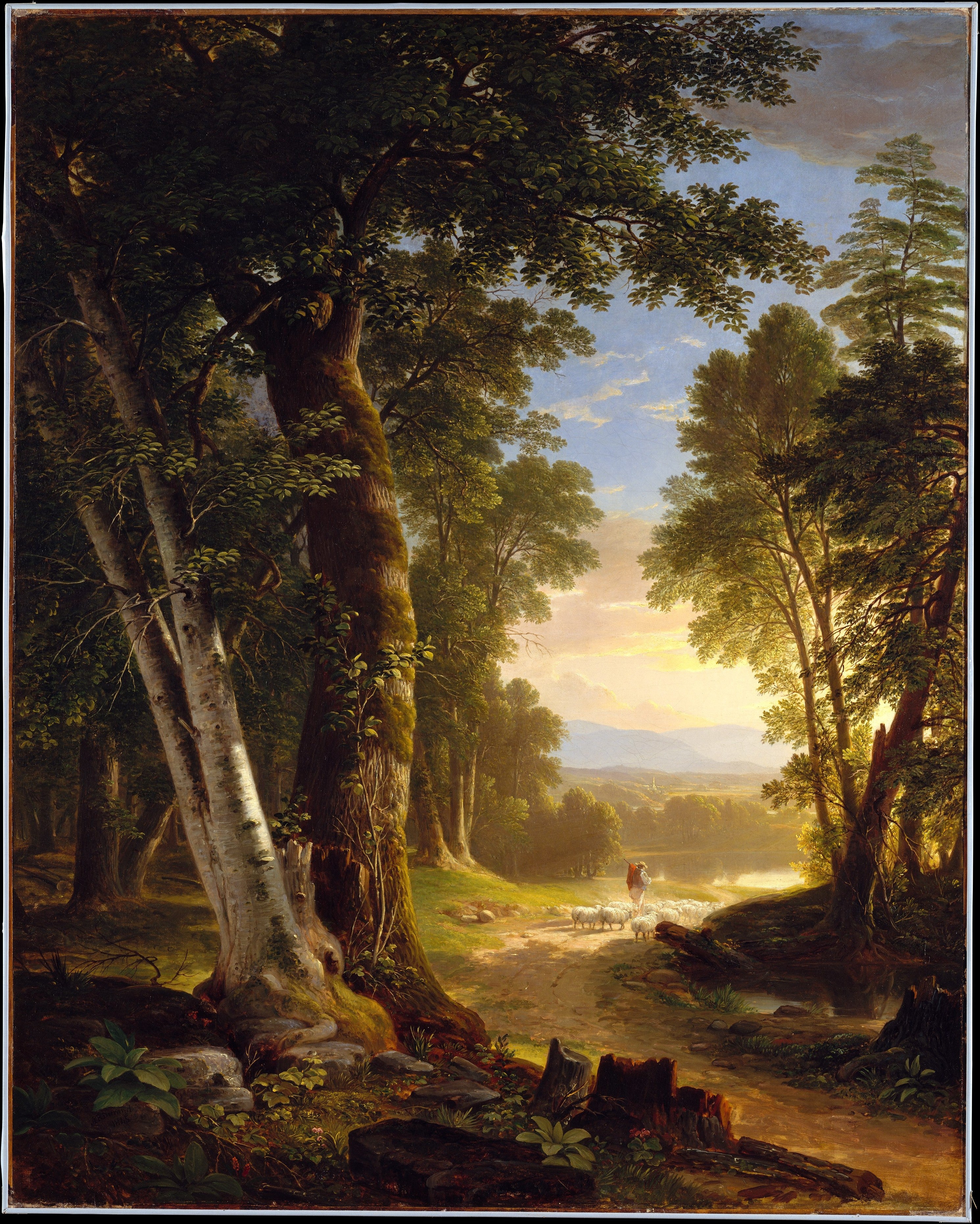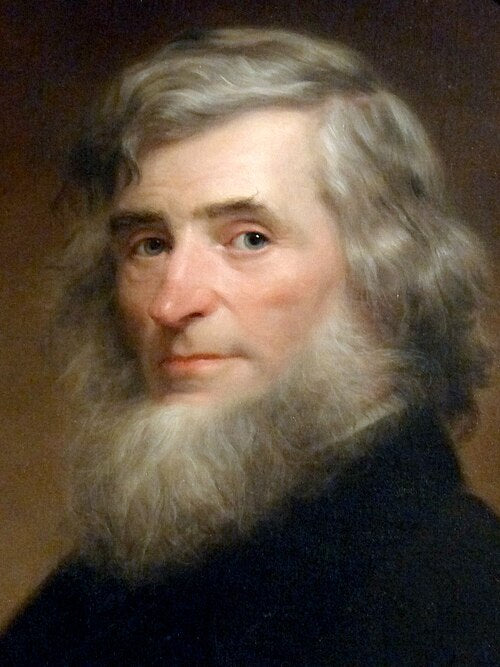
The Beeches
"The Beeches" represents a pivotal moment in Asher B. Durand’s artistic journey and in the broader evolution of the Hudson River School. Commissioned by the New York art patron Abraham M. Cozzens—an influential member of the executive committee of the American Art-Union—the painting departs from the earlier, more dramatic portrayals of nature that defined the movement's beginnings. Instead, Durand offers a serene woodland scene, meticulously rendered and quietly contemplative in tone. The composition is dominated by the stately presence of beech and basswood trees, their smooth trunks and delicate foliage captured with remarkable fidelity and sensitivity.
This painting signals a shift toward naturalism and intimacy—a new aesthetic that favored calm observation over theatrical grandeur. Rather than awe-inspiring vistas or tempestuous weather, Durand focuses on a peaceful forest interior, gently bathed in filtered sunlight. The result is a mood of quietude and reverence, a space inviting the viewer into nature's more personal and introspective realms.
Durand’s approach in this work was deeply influenced by his exposure to the English landscape painter John Constable during a visit to England in 1840. The vertical composition, the attention to ordinary woodland subjects, and the devotion to rendering nature with “truth” all echo Constable’s ethos, particularly as seen in works like The Cornfield (National Gallery, London). Yet The Beeches is not a mere imitation—it marks a critical development in Durand’s own method. It is his first painting directly based on a plein-air oil sketch, reflecting his growing commitment to capturing the specific qualities of light and shadow observed firsthand in nature.
By grounding his studio practice in field studies, Durand aligned his work with a broader movement toward empirical observation and authenticity. The Beeches thus becomes not only a portrait of a tranquil grove, but also a manifesto of a new artistic philosophy—one that embraced the quiet poetry of the natural world, rendered with humility, clarity, and deep emotional resonance.
Choose options


The Beeches
About Artist

Asher Brown Durand
